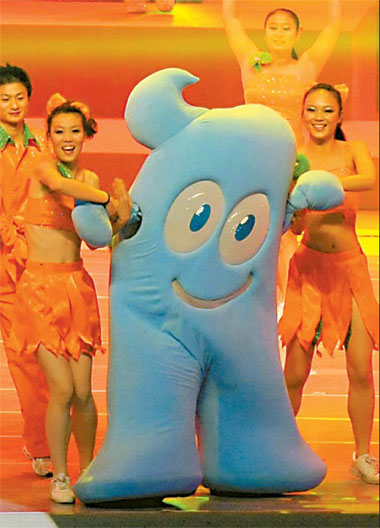Taikang Lu, and why I love it

Shanghai has its own model for gentrification known as Xitiandi. It's nice, just nice. There are some interesting shops and good higher end restaurants, but one has the sense that the evolution was not exactly natural. The sleek, comfy coolness is all too perfect. It feels like a planned community for yuppie invaders. The hipness of any neighborhood needs to be called into question when it links to "Hot Stores" on its official website. Image is unabashedly emphasized over character, but by the looks of it, it is thriving on that formula. Oh well, it was fun while it lasted.
If you are walking in the French Concession, there is an alley at 155 Jianguo Lu that you should probably turn at. It is utterly nondescript, but bear with me. Sure, there are few markings and it looks like a thousand other winding alleys in Shanghai – you do get a lot of winding alleys when not using a grid system like Chicago. Anyway, the turn is worth it.
At first, there appear to be a few storefronts in the distance, nothing much. Almost imperceptibly you start to realize that you are in a very different place, an alternative Shanghai. All indicators as to place, directionality, and scale disappear when you enter the maze known as Taikang Lu. Sightlines are too crowded to situate yourself beyond what you just passed by and whatever you find as you turn this or that corner. Unlike all of my other walks in this city, I could never grasp my cardinal bearings and any notion of how much ground I covered and how much more there was to see was distorted beyond meaning.

Information cobbled together from a restaurant menu and a few subsequent and painfully slow internet searches told me that Taikang Lu is a classic example of shikumen, a type of tenement design common in the late 19th and early 20th centuries that is unique to Shanghai. (Well, the same menu informed me that the area is called “Tian Zifang,” but that name is of unknown origin.) The vestiges of poverty are still there, namely in aging residents who sit on wooden chair outside their backdoors and watch, unphased, by the shoppers and strollers. But these tenement dwellers of generations ago seem to coexist peacefully with the present.

The architecture of poverty has merged with an architecture of secrets. The result is an Escher neighborhood: a labyrinth of narrow alleys where everyday life, commerce, and Bohemia fold in on each other. And none seems to take center stage. A man locking up his rickety bike outside of his gate may be in the background as you peer into one of the innumerable tiny cafes. Or two women shucking vegetables in the alley out their kitchen door may be in the foreground of an art gallery you spot down an alley off an alley off an alley. Discovery can't help but be a pleasure. Spaces alternate from being lit by shadows, lamps, and the warm lights of deceptively sized restaurants. Stores, galleries, and, one assumes, the apartments above them are cramped, but this urban ecosystem runs smoothly and seemingly every space maximizes utility and your interest.

We browsed and spent in art galleries, dim bookshops, and cozy stores that sold anything under the guise of modern Asian cuteness. We found a Thai restaurant, much to the pleasure of the Thai traveler among us. It seemed passable from street level, but the hostess led us up a steep staircase of dark wood at showed us to a private balcony giving us a dusky view of the alleys and rooftops. We gorged ourselves on basil-redolent beef, a sweet and savory vegetable curry, prawn soup, a light squid salad, and shrimp cakes. We capped off the meal with gelato in a café. Never a huge fan of the real thing, I found the honeydew gelato the refreshing gem of their flavor lot.

Prawn soup
This neighborhood enchanted me. It's what travel is for. We could have lost ourselves there for hours, but there was work in the morning. Still, those alleys make you want to stay forever and explore because you are certain that you can never possibly see everything. I felt it had no duplicate anywhere in the world. Who could duplicate something so physically confusing and fascinating?
As you turn and walk away, you hardly notice, but suddenly you are back in the rest of Shanghai, just like you were before. My co-worker summed it up best. Tian Zifang is like a fairy garden. You can bring your friends to the very same spot the next day, but in daylight you won’t find a trace of it. In the face of their doubts, you will swear it was there the night before, that you saw it with your own eyes, but all you will see is an alley off of a tree-lined block, just like some many others in the city.

Lunch counter in Taikang Lu























